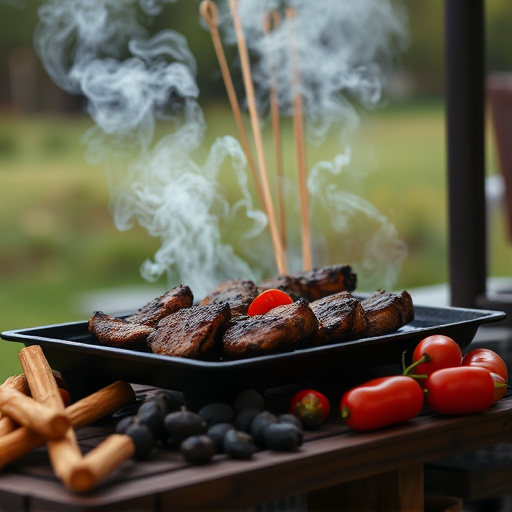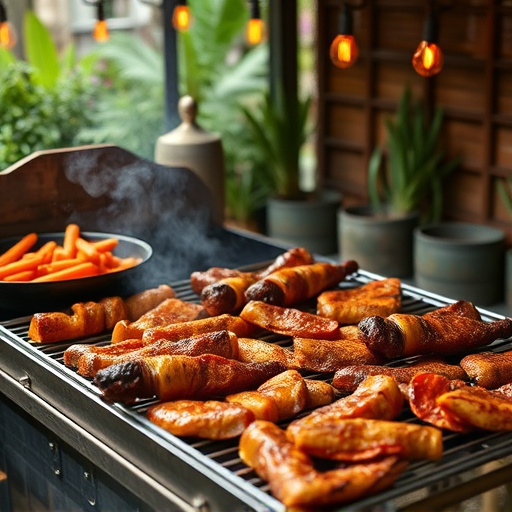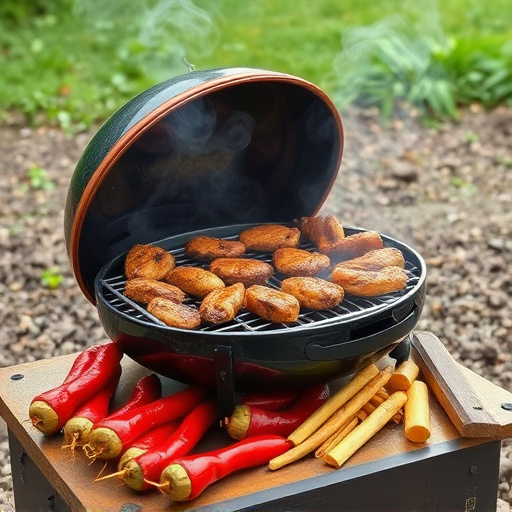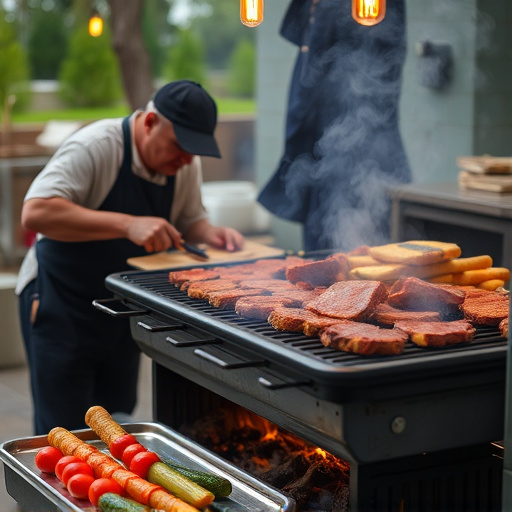Preparing perfect Slow Cooker BBQ Ribs involves choosing between baby back or spare ribs, trimming fat and membranes, seasoning with a spice mix, and either pre-soaking in BBQ sauce. Both cuts benefit from slow cooking, which tenderizes them and preserves juiciness. For maximum tenderness and flavor, pound the ribs to break down connective tissues, marinate overnight, then cook in the slow cooker for an exceptional result.
Looking for an effortless dinner that’s as tasty as it is easy? Try your hand at making Slow Cooker BBQ Ribs! This recipe takes the hassle out of meal prep, delivering tender, fall-off-the-bone ribs with minimal effort. We’ll guide you through choosing the right ribs, preparing them for slow cooking, and creating a delicious BBQ sauce that will have your family and friends begging for more. By following our step-by-step recipe, you’ll be serving up a classic Slow Cooker BBQ Ribs Recipe in no time.
- Choosing the Right Ribs and Preparing Them for Slow Cooking
- – Types of ribs suitable for slow cooker
- – Tips for tenderizing ribs before cooking
Choosing the Right Ribs and Preparing Them for Slow Cooking

When it comes to slow cooker BBQ ribs recipes, selecting the right cut is key to tender, flavorful results. Look for meaty rib sections with a good balance of bone and meat. The most common options are baby back or spare rib; both work well in a slow cooker due to their natural tenderness and fat content, which helps keep them moist during the long cook time. Before cooking, trim any excess fat or membrane from the ribs to ensure even cooking and a cleaner final product.
To prepare the ribs for slow cooking, start by rubbing them generously with your favorite BBQ spice rub. This step enhances flavor and helps create a delicious crust on the ribs as they cook slowly. Some cooks also like to soak the ribs in BBQ sauce before or after seasoning, but this is optional based on personal preference. Either way, place the seasoned ribs in your slow cooker, ensuring they are snugly arranged for even cooking.
– Types of ribs suitable for slow cooker

When it comes to choosing the right ribs for your slow cooker BBQ ribs recipe, there are a few options to consider. The most common and suitable types include baby back ribs and spare ribs. Both have their unique flavors, but they share the benefit of being tender and flavorful after slow cooking. Baby back ribs, with their smaller size and less bone, cook quickly and easily in the slow cooker, making them an ideal choice for those looking for a quicker meal without sacrificing taste. Spare ribs, on the other hand, offer a heartier portion and a richer BBQ flavor profile. They may take a bit longer to cook but are well worth the wait for their tender, succulent texture.
Using a slow cooker allows these ribs to cook gently over several hours, breaking down the connective tissues and making them incredibly easy to eat. This method also ensures that your BBQ ribs remain juicy and flavorful, without drying out or becoming tough, which can sometimes happen with traditional cooking methods. Whether you prefer baby back or spare ribs, a slow cooker recipe is an excellent way to prepare this classic American dish with minimal effort.
– Tips for tenderizing ribs before cooking

Before tossing your ribs into the slow cooker, there are a few simple tricks to help them reach that melt-in-your-mouth tender state. One effective method is to use a meat mallet or a heavy pan to gently pound the ribs. This process helps break down the connective tissues, making the ribs more susceptible to becoming incredibly tender during the long, slow cooking process. Another tip is to cut between the bones with a sharp knife; this can help speed up the tenderness process and ensure that your ribs cook evenly.
For a Slow Cooker BBQ Ribs Recipe, preparing your ribs ahead of time can also make a significant difference. You can even start by marinating them for several hours or overnight in a mixture of your favorite BBQ sauce, olive oil, salt, pepper, garlic powder, and paprika. This not only adds flavor but also helps to tenderize the ribs further, making them ready for that slow, steady cook that will result in succulent, fall-off-the-bone meat.
